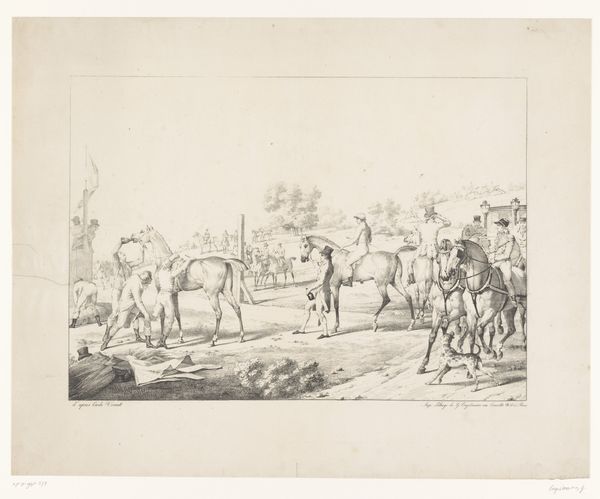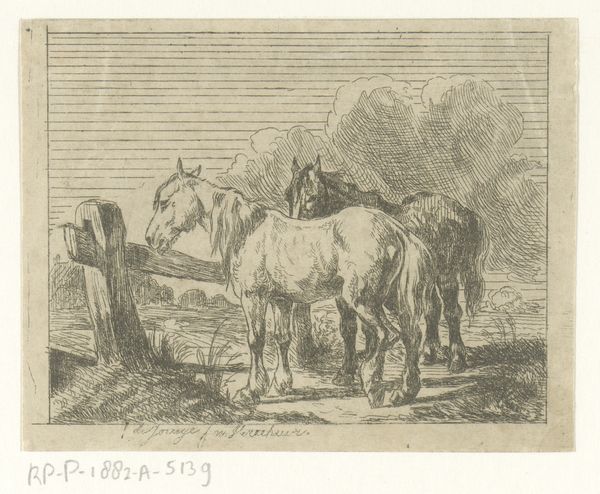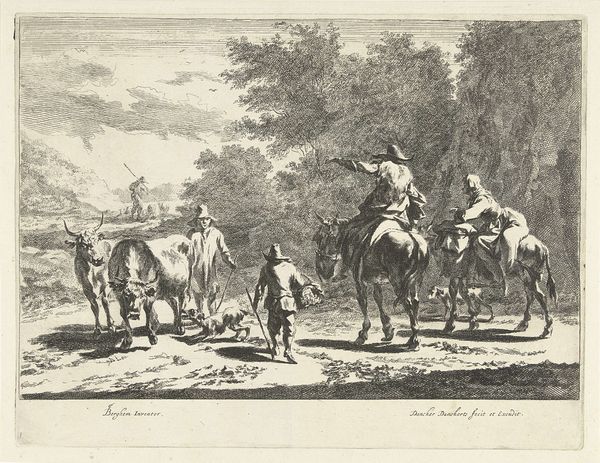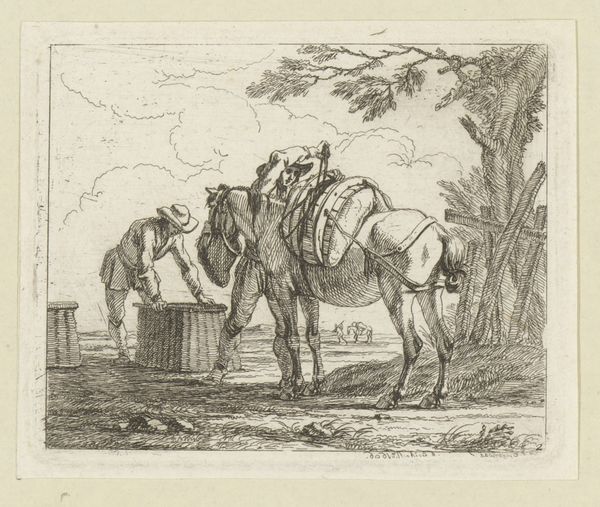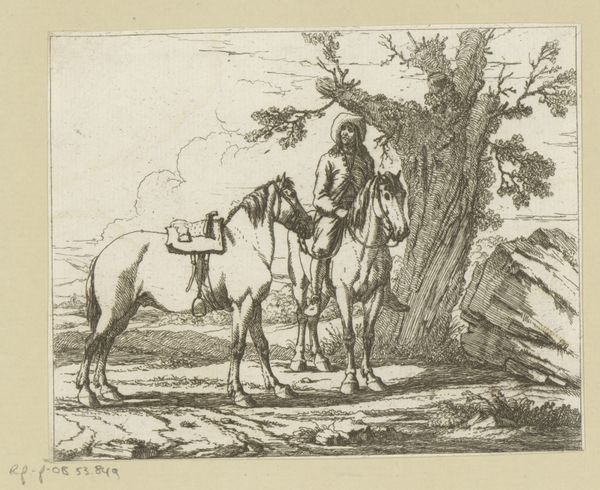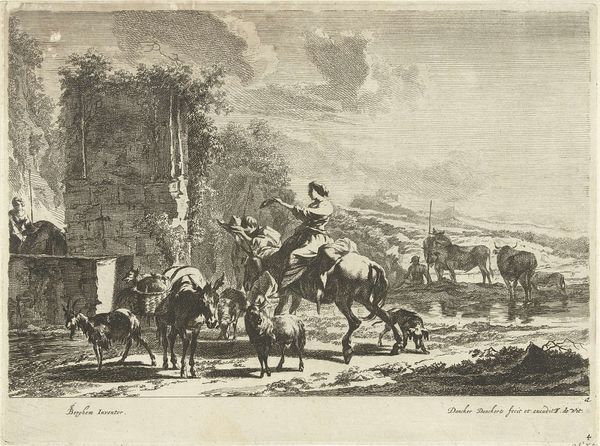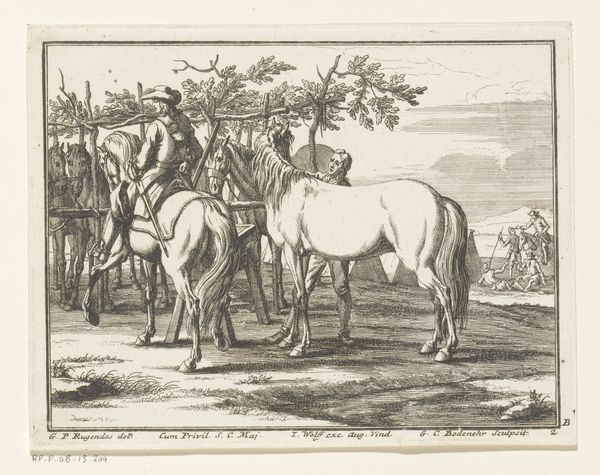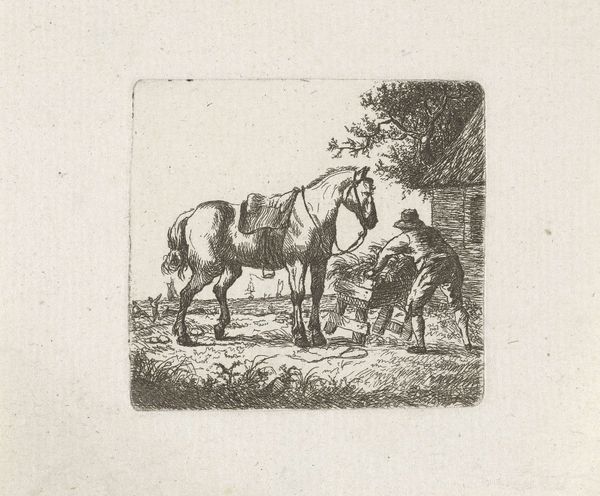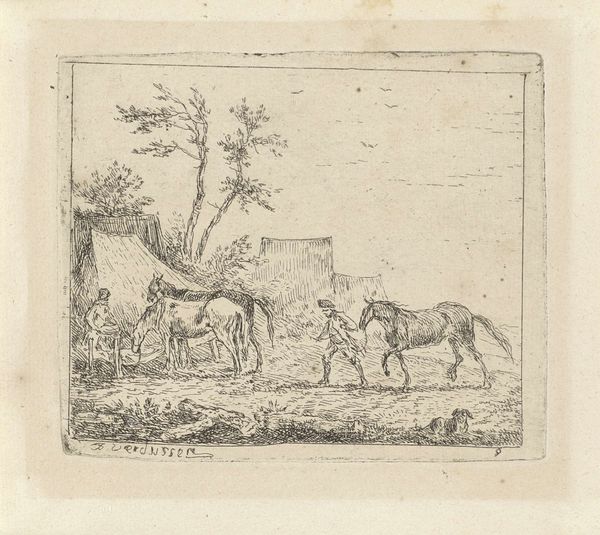
Dimensions: height 79 mm, width 91 mm
Copyright: Rijks Museum: Open Domain
Editor: Here we have Dirk Langendijk's "Voeren van het paard" from 1777, currently held at the Rijksmuseum. It’s an ink and engraving drawing of horses, people and boats. There’s a really active sense of landscape with all this activity crammed into a relatively small frame. What stands out to you when you look at this? Curator: The dense layering of the scene certainly strikes me. Consider how Langendijk employs hatching and cross-hatching to construct form and volume. Look, for example, at the musculature of the horse. How does the artist create a sense of depth and perspective in a medium typically bound to the two-dimensional plane? Editor: Well, the foreground figures are darker and more defined, especially the central horse and the people near it, and everything behind seems lighter, less detailed and fuzzier. Is it something like atmospheric perspective? Curator: Precisely! Furthermore, consider the relationship between line and form. Is the artist primarily concerned with depicting realistic textures and details, or is there a sense of expressive freedom in the mark-making itself? Notice how the engraving and ink combine. Editor: It seems like the engraving creates these tight controlled contours to give us the figures and the scene and ink washes give the texture and background. It feels precise, but loose, too! I initially didn't notice the Latin inscription under the drawing. How does the addition of text impact our experience of the work? Curator: The inscription "Equitando citius quam vento contrario"—"Riding faster than the contrary wind"—anchors the piece with meaning that complements the visuals. Note how the linear qualities of the text resonate with the meticulous engraving. Editor: It's interesting how the inscription changes the way I see the energy of the scene, shifting my focus toward movement and the challenges it implies. It’s almost like the artwork has a secret! Curator: Exactly! And by attending to these intrinsic details, we decode layers within. Editor: That focus on composition really helped me appreciate how the artist guided my eye, even within a busy image. Curator: And examining the relationship between technique and intention provides another tool for visual analysis.
Comments
No comments
Be the first to comment and join the conversation on the ultimate creative platform.
